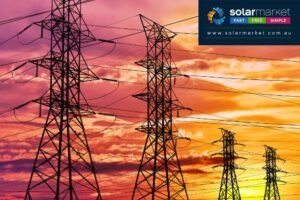The Tasmanian Government recently published its Climate Change Strategy which outlined 9 areas for addressing climate change in the state. Currently Tasmania’s carbon emissions are only 1.3% of the nation’s total, which may sound low, but are still higher per capita than countries including Germany, UK, China and India. The state aims to lower its green-house emissions to 60% lower than 1990 levels by 2050.
Nine areas for addressing climate change were highlighted: Government Operations, Natural Environment, Rural Land Use, Energy and Economy, Human Settlements and Infrastructure, Sustainable Transport, Emergency Management, Homes and Communities and Waste and Resource Efficiency.
Proposed strategies for lowering the state’s green-house emissions included increased usage of carbon credits, extending the RELS scheme (Renewable Energy Loans), the introduction of a smart electricity network, which allows for production of electricity to be varied according to need, replacement of the Metro fleet, Australia’s oldest public bus fleet, the introduction of LNG (liquid nitrogen gas) for freight moving, the introduction of a 7 star NatHERs (NATIONAL House Energy Rating Scheme) rating scheme.
The RELS scheme is a low interest loans scheme available for businesses to allow them to purchase and install renewable energy generators and technologies. In 2010-11 $30M were allocated for grants of up to $100,000. Currently the scheme is open until June 2014.
Tasmanian homes use on average 9.3 MW of electricity each year compared to 6.6 MW for the rest of the country. This is in part due to inefficient housing, and reliance upon electric energy for heating. The Tasmanian government plans to spend almost $18 M between 2010 and 2014 to help low income households reduce their power bills through education and upgrades and retrofits. The government also hopes to introduce the 7 star NatHERS system by 2016, which will mean new buildings will need to comply with higher energy efficiency standards.
Currently 87% of the state’s electricity comes from renewable sources, a fact which the state hopes to remedy to exceed 100% by 2020, with excess energy being sold interstate. This is hoped to be achieved by developing a Smart Network which utilises various technologies to automate the electricity grid to vary production according to need, improving efficiency, reliability, economics and sustainability. A Smart Network is essential for Tasmania since it is in the unique situation that is has a high number of small hydro generators which currently need to pump electricity in one direction, with reverse flows resulting in voltage spikes, frequency variations and black outs. This has become even more difficult to maintain with the increase in solar generation. The government also plans to extend the RELS, allowing companies to produce more of their own renewable energy.
Tasmania has only one power producer, Aurora, which is diversifying from mainly hydro into solar, wind, geothermal and wave energy. They do have an electricity buy back scheme where producers, both residential and business, can sell back their excess energy to Aurora. New customers can sell their excess back for 8c per kW (until 1 Jan 2014), existing residential customers can sell back at 28.283c per kW until 1 January 2019, and businesses can even claim 38.577c per kW for the first 500 kW, when it reverts to 28.319c per kW. There are some conditions, importantly that customers cannot move premises or alter the capacity of their generation.











